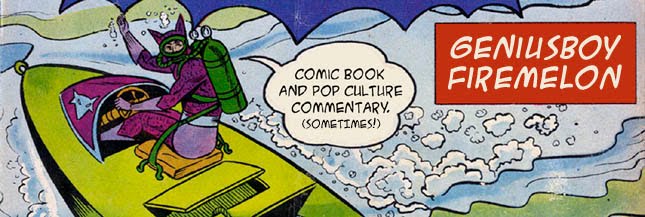Each week, I spend one hour a day sketching, building up a set of skills that should, we all hope, show improvement over a one-year period. Sometimes I'll draw by copying comic book artists, sometimes I'll draw from life, sometime I'll draw from how-to books, and other times, I'll just sketch with whatever is at hand. This is WEEK THREE of a 52 week experiment to see how well I can learn how to draw.
Boy, I do not have an affinity for this stuff at all. I figured I would stretch myself and play around with some manga images this week, and who better to look at then Osamu Tezuka? I have had a love/not-hate-but-indifference relationship with his work over the years, with a fondness for his stranger comics but a real lack of interest in his more popular work (like "Astro Boy," which I can appreciate as a cultural institution, and as the basis for "Pluto," but I really can't read for any sustained period without completely spacing out).
But Dash Shaw's recent
"Comics Comics" post on the Tezuka art book, and the documentary included, in particular, reminded me that I need to give Tezuka some more focused attention, and the documentary is a fascinating look at the grind of producing comics, even when you are a master of the form. (I picked up the book and the documentary immediately after reading Shaw's post, because I have no impulse control when it comes to awesomeness.) I also just happened to watch the brief
CBR TV interview with Keith Giffen, who draws nothing like Tezuka (though I need to do a WEEK OF GIFFEN during this year of Sketchblogging, I think), and he refers to mainstream comics as "volume work," which is just about the most accurate and concise description I've ever heard for the kind of stuff pumped out by Marvel and DC. That doesn't mean that quality can't exist, but the name of the game is volume, it's about producing, feeding the fans, and that's really the point.
So, yeah, back to Tezuka. Even though I have the Tezuka art book and a variety of other work by him ("Black Jack" and, especially, "Dororo" as my two favorites, probably), I decided to focus my sketching this week on the third Dark Horse volume of "Astro Boy," just to see what happened when I took Tezuka's tiny panels and blew them up in sketch form.
I couldn't get Astro Boy right, ever. Not even close. He's just a few basic shapes, but he looked like a demented teddy bear every time I tried to draw him. And I was fascinated by the weird abstractions Tezuka would use as he cranked out these pages (if his work schedule in the documentary is to be believed). That sketch on the top left is based on a panel from the final story in the book, and that's really how Tezuka drew that guy's right arm and leg. Just these humps, these blobs of shape. His version looks more jaunty and has more movement than mine, because, as I said, I can't help but do demented versions of Tezuka. I have no sense of the fluidity of his line -- or I can't come close to replicating it -- and my ability to draw "cute" is completely nonexistent. For now at least.
(I was going back through the Gary Panter Picturebox massive book o' goodness last week, because it's amazing, and Panter talks about how he could never get away from the cuteness of his style, and he eventually just figured out that he had to embrace it. I clearly do not have an affinity for cute in my own sketchbook, even though I like it when I see it.)
Maybe I'll come back to this kind of proto-manga approach at the end of the one year experiment and see if I can pull off Tezuka's seemingly simple style with any kind of accuracy. Clearly, I have a lot of work to do.
NEXT WEEK: I don't know. Maybe I should take Guglie's advice and dig into some Alex Raymond. Guglie knows what he's talking about!
 Yeah, I didn't sketch at all last week. Well, that's not exactly true. I did draw out some character sketches for a top-secret project Television's Ryan Callahan and I will be working on in 2011. But I didn't draw any Keith Giffen sketches like I wanted to.
Yeah, I didn't sketch at all last week. Well, that's not exactly true. I did draw out some character sketches for a top-secret project Television's Ryan Callahan and I will be working on in 2011. But I didn't draw any Keith Giffen sketches like I wanted to.



